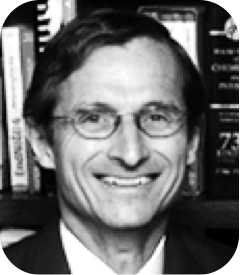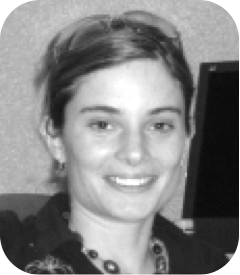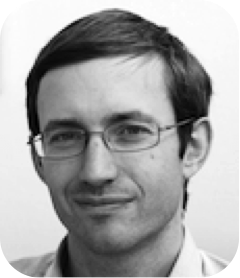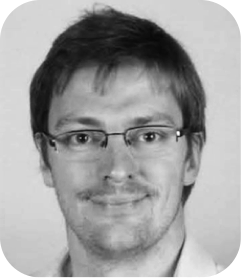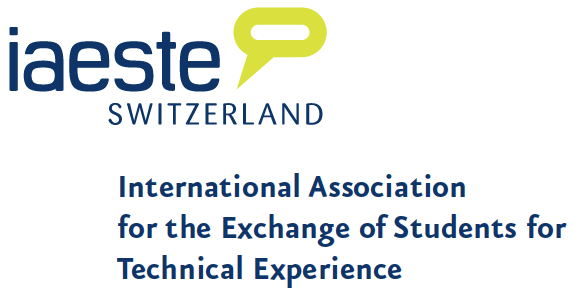EuCheMS Brussels News Update, Dec 2013
<iframe frameborder="0" scrolling="auto" width="100%" height="800px" src="http://us6.campaign-archive1.com/?u=c4a58424d8652d1465429bd26&id=0cb55baae6&e=fa5d4ad9f0"></iframe>
ChemistryViews Hitlist - Nov 2013
ChemViews Magazine – Interviews
- Career: As A Chemist Coaching Manager, 05 November 2013, Author: Vera Köster
- Dan Shechtman: Suceeding in Science, 30 October 2013, Author: Vera Köster and Christian Remenyi
- Women in Chemistry – Interview with Yamuna Krishnan, 03 May 2011, Author: Vera Köster
ChemViews Magazine – Highlights (without Interviews)
- 2012 ISI Journal Impact Factors, 06 July 2013, Author: ChemViews
- 2011 ISI Journal Impact Factors, 09 July 2012, Author: ChemViews
- Classic Paper but No New Data, 05 November 2013, Author: Richard Threlfall
ChemistryViews.org – News
- Mukaiyama Aldol Reactions in Aqueous Media, 05 November 2013, Author: Veronika Belusa
- Top 20 Analytical Scientists, 30 October 2013; Author: ChemistryViews
- Winner of Last iPad Raffle, 24 November 2013, Author: ChemistryViews
ChemistryViews.org – Education
- Tips and Tricks for the Lab: Column Choices, 03 July 2012, Author: Sarah Millar
- Tips and Tricks for the Lab: Column Troubleshooting and Alternatives, 07 August 2012, Author: Sarah Millar
- Tips for Writing Better Science Papers, 05 September 2013, Author: Richard Threlfall
ChemistryViews.org – Videos
- Picture Competition 2013 & Calendar 2014, 02 September 2013, Author: ChemistryViews
- Linda Nazar: Developing Materials for Energy Storage And Conversion, 30 September 2013, Author: ChemViews
- What is the InChl Code, 09 April 2013, Author: IUPAC
David Spichiger, SCS
12.12.2013
SCS Award Winners 2014
The Swiss Chemical Society is proud and happy to announce the SCS Award Winners 2014 and to honor their outstanding achievements.
We sincerely congratulate all winners and we are looking forward to the ceremonies and award lectures that will take place during the next year.
Paracelsus Prize 2014
CHF 20'000 and medal in gold
The prize is given to
|
|
Prof. Richard R. Schrock, Massachusetts Institute of Technology, for his seminal work in synthetic and mechanistic organo-transition metal chemistry. |
Werner Prizes 2014
CHF 5'000 and medal in bronze.
The prize is given to
|
|
Prof. Clémence Corminboeuf, EPFL Lausanne for developing and applying state of the art computational and theoretical methods for interpreting and solving chemical problems in complex systems |
|
|
Prof. Jérôme Waser, EPFL Lausanne, for the development of novel synthetic methods and strategies to construct complex structures of potential biological interest. |
Grammaticakis-Neumann Prize 2014
CHF 5'000
The prize is given to
|
|
Dr. Erwin Reisner, University of Cambridge, for his research combing synthesis, photochemistry, photophysics, and molecular photobiology to develop artificial photosynthesis. |
Sandmeyer Award 2014
CHF 20'000
The award is given to
|
|
Dr. Harald Walter Dr. Hans Tobler Dr. Camilla Corsi Dr. Denis V. Gribkov from Syngenta Crop Protection Münchwilen AG, for their successful and innovative efforts in discovering, developing, and producing new broad-spectrum agrochemical fungicides |
Dr. Max Lüthi Award 2014
CHF 1'000 and medal in bronze. The award is given to
Yannick Stöferle, ZHAW,
for his Bachelor thesis on the synthesis and spectroscopic analysis of chiral halomethanes and oxiranes.
Balmer Prize 2014
CHF 2'000 and medal in bronze for the prize winner and 2'000 for the school's chemistry department
There is no prize given in 2014.
David Spichiger, SCS
28.11.2013
Ausschreibung der (S|P|S) Preise für 2014
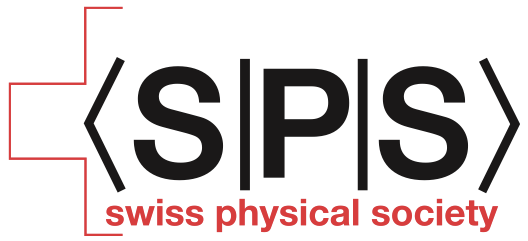 Auch im Jahr 2014 sollen wieder SPG-Preise, die mit je CHF 5000.- dotiert sind, vergeben werden.
Auch im Jahr 2014 sollen wieder SPG-Preise, die mit je CHF 5000.- dotiert sind, vergeben werden.
- SPG Preis gestiftet vom Forschungszentrum ABB Schweiz AG für eine hervorragende Forschungsarbeit auf allen Gebieten der Physik
- SPG Preis gestiftet von der Firma IBM für eine hervorragende Forschungsarbeit auf dem Gebiet der Kondensierten Materie
- SPG Preis gestiftet von der Firma OC Oerlikon für eine hervorragende Forschungsarbeit auf dem Gebiet der Angewandten Physik
- SPG Preis gestiftet vom METAS für eine hervorragende Forschungsarbeit mit Bezug zur Metrologie
Die SPG mochte mit diesen Preisen junge Physikerlnnen für hervorragende wissenschaftliche Arbeiten auszeichnen. Die eingereichten Arbeiten müssen entweder in der Schweiz oder von Schweizerlnnen im Ausland ausgeführt worden sein. Die Beurteilung der Arbeiten erfolgt auf Grund ihrer Bedeutung, Qualitat und Originalitat.
Der Antrag für die Pramierung einer Arbeit muss schriftlich begründet werden. Die Arbeit muss in einer renommierten Zeitschrift publiziert oder zur Publikation angenommen sein. Wenn mehrere Publikationen eingereicht werden, um die Leistungen des Kandidaten umfassender darzustellen, muss genau gesagt werden, welche Publikation für die Preisvergabe in Betracht gezogen werden soll.
Der Antrag muss die folgenden Unterlagen enthalten:
- Begleitbrief mit Begründung
- Lebenslauf des Kandidaten mit Publikationsliste
- die zu prämierende Arbeit
- und ein Gutachten.
Diese Unterlagen werden elektronisch im pdf-Format direkt an das Preiskomitee eingereicht (grosse Dateien bitte komprimieren (zip)):
Einsendeschluss: 31. Januar 2014
Weitere Informationen: http://www.sps.ch/sps_award/
David Spichiger, SCS
27.11.2013
IAESTE Switzerland – Rundumservice bei der Traineevermittlung
IAESTE Switzerland gehört seit der Gründung 1948 zu den herausragenden akademischen Austauschprogrammen weltweit. Jährlich profitieren rund 4000 Firmen, 4000 Studierende und 1200 Hochschulen vom attraktiven IAESTE-Service überall auf der Welt.
Allein in der Schweiz werden durchschnittlich 250 Praktikant/-innen erfolgreich platziert. Spezialisiert hat sich IAESTE auf die Vermittlung von qualifizierten Studierenden technischer und naturwissenschaftlicher Fachbereiche. Dabei funktioniert das Programm nach dem 1:1 Prinzip: Jeder Arbeitgeber, der eine Stelle über IAESTE ausschreibt, schafft zugleich einen Praktikumsplatz im Ausland für Schweizer Studierende. Ob Aeronautical Engineering oder Microbiology, für jeden Arbeitgeber macht IAESTE den besten Kandidaten ausfindig.
Der Arbeitgeber registriert sich in nur wenigen Minuten online und gibt sein Wunschprofil für den von ihm ausgeschriebenen Job an. Nach ein paar Klicks braucht er nur abzuwarten, bis ihm von der Organisation bald ein passender Kandidat vorgestellt wird. Das lästige Durchlesen hunderter Bewerbungsmappen entfällt. IAESTE kümmert sich weiter um Visum bzw. Arbeitsbewilligung und bietet ein weltweites, täglich wachsendes Netzwerk, von dem sowohl die Studierenden als auch die Arbeitgeber profitieren können.
Machen Sie mit beim IAESTE – Austauschprogramm und melden Sie uns Ihre Praktikumsstelle auf www.iaeste.ch/Employers/! Oder kontaktieren Sie uns unter 043 244 95 27/8 oder
Weitere Informationen über IAESTE
IAESTE (International Association for the Exchange of Students for Technical Experience) ist eine internationale Austauschorganisation und vermittelt Praktikumsplätze im Ausland für Studierende technischer und naturwissenschaftlicher Fakultäten. www.iaeste.ch
David Spichiger, SCS
27.11.2013
Page 155 of 299


